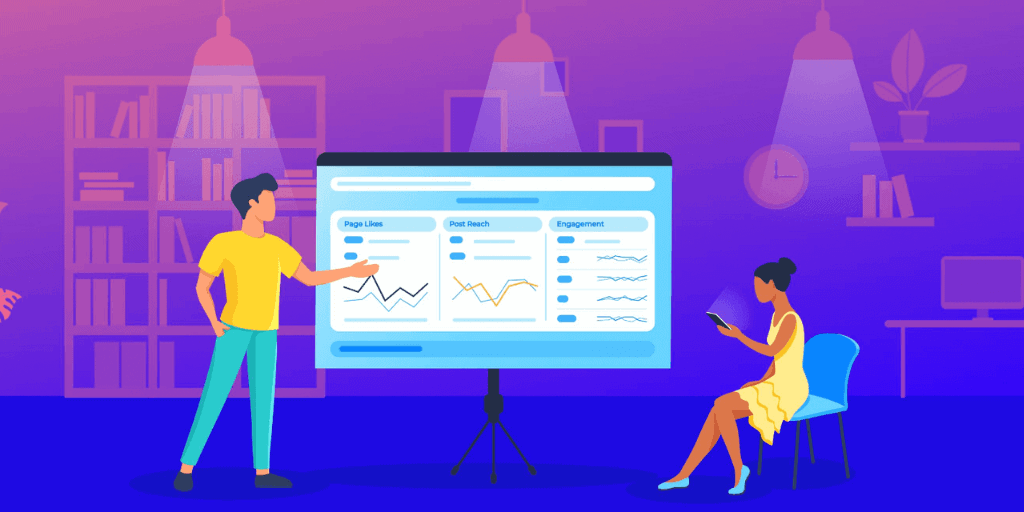Are you making the most out of your social media insights?
Social media is one of the best-performing marketing platforms you have at your disposal. It’s how you connect with your existing audience and how new audiences find you.
And it’s an amazing source of traffic to your website.
But if you’re not leveraging your social media insights to their full potential, you could be missing out on a lot of opportunities to improve your presence, grow your followers and your overall results from social.
Here’s how to take full advantage and leverage your social media insights to grow your business:
Table of Contents
Why are your social media insights so important?
Without insights, you’re essentially shooting in the dark: you’re trying all these different strategies but you don’t know exactly which work and which don’t.
This is true of all marketing strategies and all marketing channels – not just social media. Whenever you use a channel to promote your business, you need to also leverage your analytics to actively inform your strategy.
And when it comes to social media marketing, your insights can provide a lot of valuable data for your business and perhaps most importantly, they will help you improve your strategy to generate better results, month by month.
However, before we get to all the best ways to leverage these insights, make sure you:
- Set goals: what exactly do you want to achieve with your social media: more followers, reach, engagement, traffic? Be as specific as you can with your goals – the SMART goal-setting model is perfect for this – and set clear deadlines for them. By doing this, you’ll be better equipped to calculate your return on investment (ROI) and understand whether your social is helping you reach your overall business and marketing goals.
- Set KPIs: KPIs – short for key performance indicators – are the metrics that you’d use to find out whether you’ve reached your marketing goals. For example, if your goal was to generate more traffic from social, then your KPIs would be clicks from each social network you use, as well as your website traffic data. If your goal was to improve engagement rate, then you’d most likely need to monitor KPIs like likes, comments and shares. The reason why it’s important to establish these KPIs from the start is that you’ll then know exactly what metrics to monitor in order to calculate your ROI, as well as to find out whether you’ve reached your social media marketing objectives.
However, apart from leveraging your social media insights to evaluate your return on investment, you can also leverage them to improve your overall strategy and results.
Here’s how:
1. Improve your social media content strategy
How well are your social media updates performing? Which ones get the most engagement and reach the most people? Which ones get you the most clicks and traffic to your website?
One of the main things that your social media insights can tell you is how each of your updates performs.
This can help you understand:
- What types of updates perform best: photos? Videos? Posts with links?
- Which specific updates generate the best engagement: these can be reused and repurposed, as well as help you create similar updates so that you can continue to grow your results
- Which updates help you achieve your social media marketing goals: for example, if your goal was to generate more traffic, you’ll need to identify which specific Facebook posts generated the most clicks:
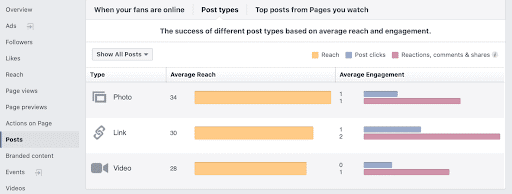
This information is extremely valuable because it tells you exactly what types of updates you should be sharing on your social media in order to achieve the best possible results and keep improving them, month after month.
It’s a very simple and quick exercise that should be done at least once a month; then, with this information, you’ll be able to improve your social media campaigns and consequently, your results.
2. Find out the best times to post your updates for maximum reach
Another valuable insight you can gain from your social media analytics is when to post your updates, based on when the bulk of your audience is online.
There’s a lot of data out there and a lot of studies made to identify the best times to post on each social network.
However, while that’s a great starting point, the truth is that every social media audience is different and that’s why you should also check your own analytics to find out when you should be posting your updates.
For example, with Facebook, you can easily find out this information by going to your Page’s Insights, clicking on Posts and then When Your Fans are Online:
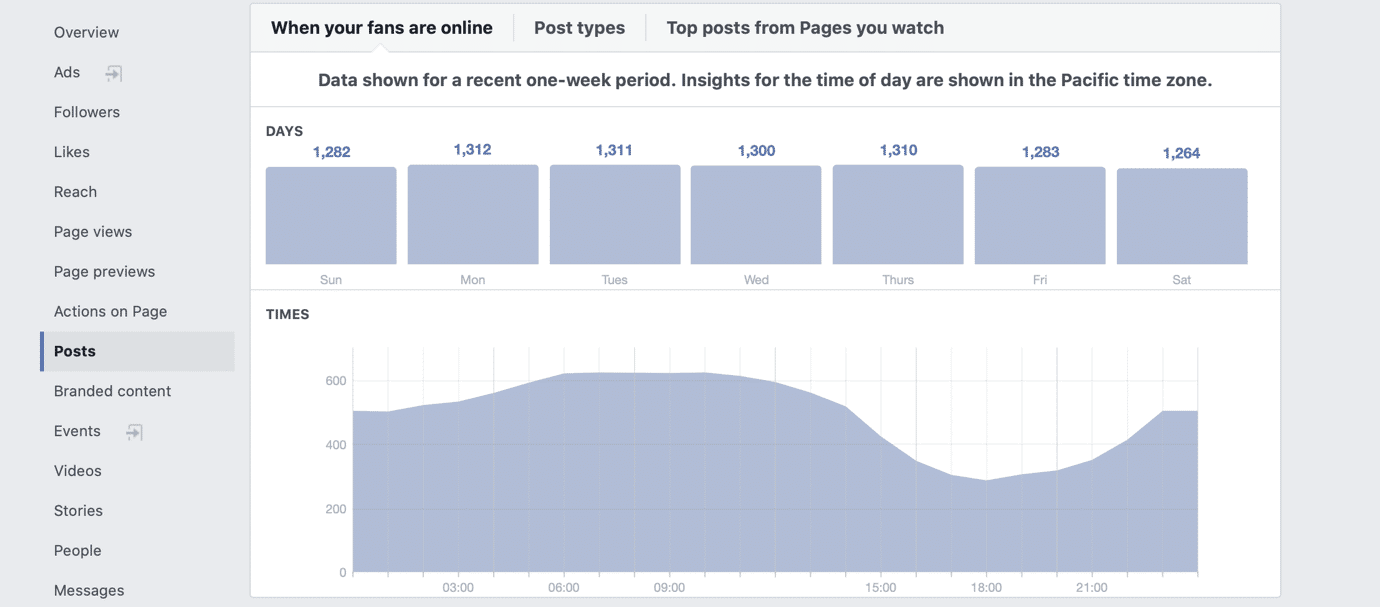
At the top, you can see the data for each day of the week and by hovering with your mouse over the graph in the Time section just below, you’ll be able to see the exact times when the bulk of your audience is active on Facebook.
Alternatively, you can also use social media analytics tools – such as Buffer – to help you identify the best times to post:
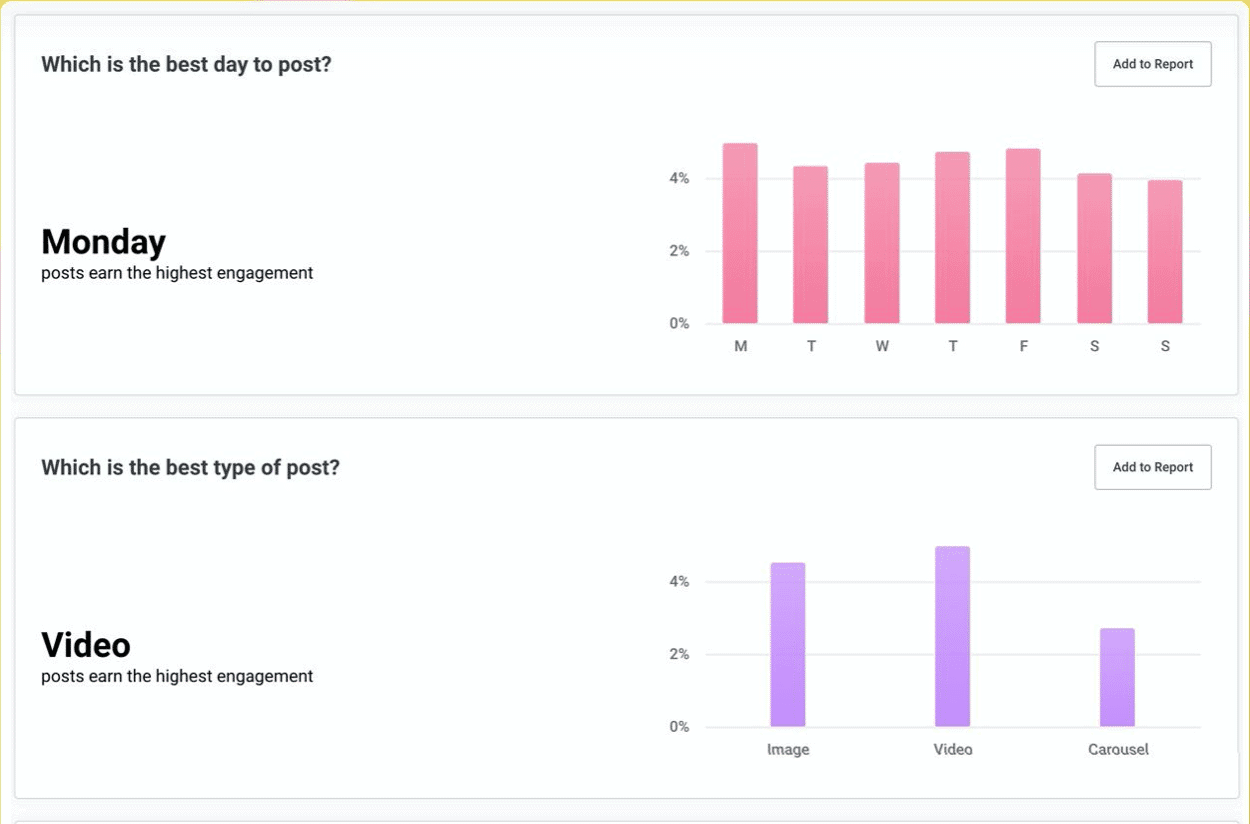
3. Identify your best performing social media channels and improve your ROI
Which channels get you the most traffic? The most engagement?
While it’s important to establish a presence on multiple (relevant) social media networks, you should also be very clear about where you should focus the bulk of your attention – and resources. This, in turn, will help improve your overall social media ROI.
To find out which social networks perform best, check your web analytics and look for:
- Which social media channels generate the most traffic to your website
- What is the quality of your social media traffic: how much time do they spend on your websites? How many pages do they visit in one session? What is the bounce rate like?
To find out all this, simply go to your Google Analytics account, then click on Acquisition -> All Traffic -> Channels. Then, from the report generated, click on Social to see a breakdown of your social media traffic for each channel.
Don’t stop at how many clicks each one generated; rather, look at all the other data provided, such as the time they spend on your site, on average, how many pages they visited during their sessions, and so on.
What’s more, you can also calculate the value of each network’s traffic by seeing how many of these visitors actually converted.
To get this data though, you first need to set up conversion goals in your Google Analytics account.
You can do this easily by going to your Google Analytics settings and then clicking on Goals:

You can set up as many as 20 different conversion goals, which can be anything from visiting a particular landing page, watching a certain video or completing your contact form. These goals are fully customizable so that you can track the exact conversions that are relevant to your business.
Once set up, you’ll be able to see how many people converted from each social platform, thus helping you identify the channels that bring the best ROI for your business.
4. Identify your target audience
Are you reaching the right audience on social media?
In order to be successful and generate a positive ROI from social media, it’s much more important to reach the right audience – rather than reaching as many people as possible. After all, if they’re not likely to buy from you or recommend you, there’s not much value in those followers from a business perspective.
That’s why you should leverage your social media insights to understand whether you’re reaching your target audience or not.
For example, a tool like Buffer can give you crucial audience insights:
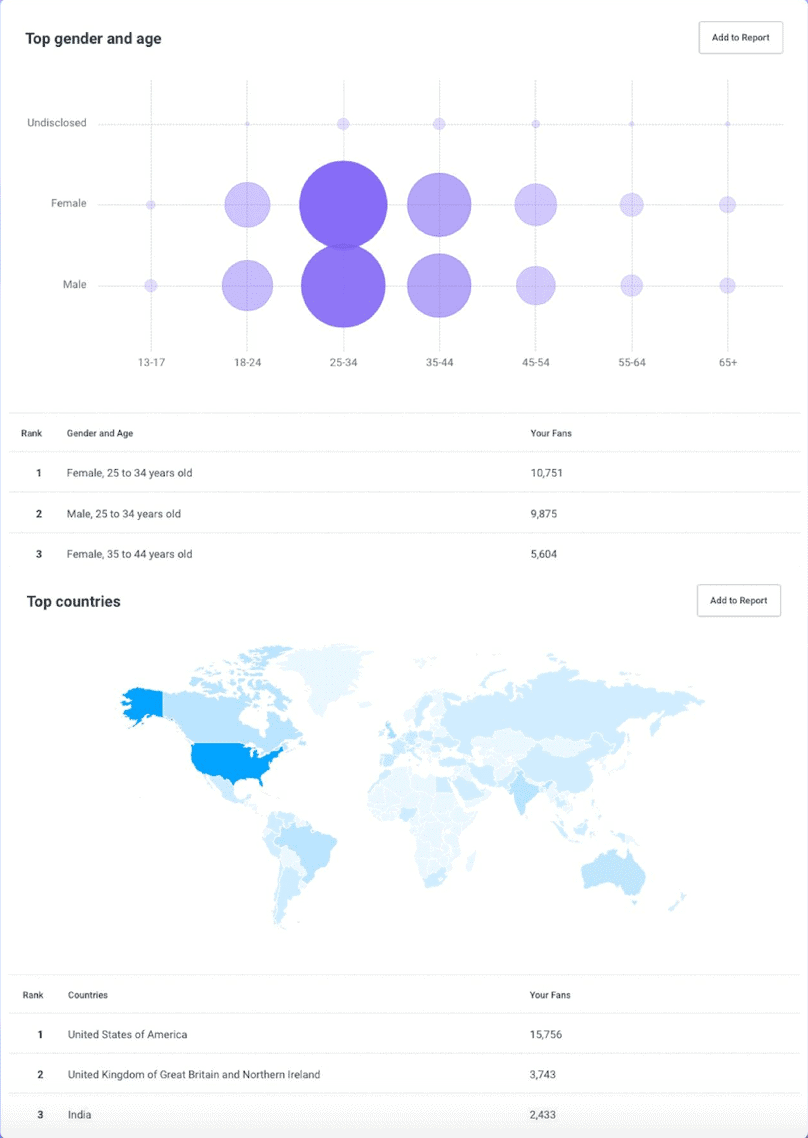
What this data will tell you is whether you need to change up your strategy in order to reach the right audience. For example:
- Running highly targeted social media ads to reach your audience and generate more followers
- Using more location-based hashtags
- Creating more niche, highly-targeted updates
While this is more of a long-term strategy – as it takes time to change your social media audience – it’s worth doing this regularly as the more targeted your followers are, the better your results will be.
Key Take-Aways:
Your social media analytics can provide a ton of insights that will help improve your overall strategy and your social media ROI.
However, it’s important to track all of this data consistently and leverage it to its full potential:
- Find out which social networks perform best and generate the best ROI
- Identify the best times to post your updates when your audience is online
- Find out which social networks generate you the most conversions and/or sales
- Understand which types of posts generate the best results
